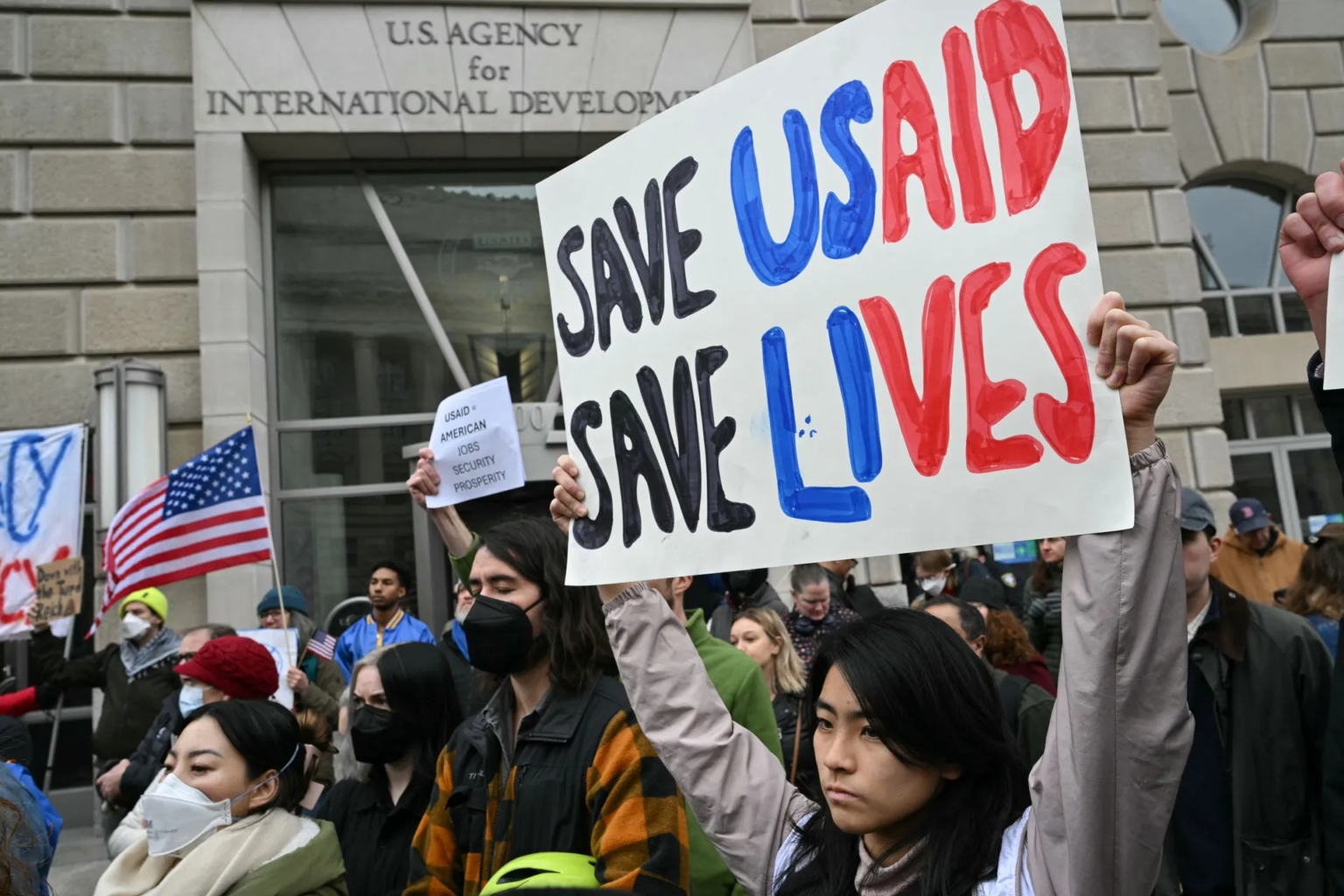US President Donald Trump’s announcement to end US cooperation leaves the situation of millions of children in limbo.
According to Save the Children, one in eleven children in the world is in need of vital humanitarian assistance. At the same time, cuts and blockages to international aid are increasing, including the imminent closure of programmes funded by the U. S. Agency for International Development (USAID). This situation endangers the lives of millions of children around the world who depend on this aid to cope with the precarious conditions in which they live, whether due to war, hunger, poverty, climate change, disease and other factors.
The drastic reduction in funding has forced many humanitarian organisations to suspend vital food, health and education programmes, leaving children in a situation of extreme vulnerability.
The drastic reduction in funding has forced many humanitarian organisations to suspend vital food, health and education programmes, leaving children in a situation of extreme vulnerability.
According to the latest figures, nearly two hundred programmes run by organisations such as Save the Children have been affected and have had to be either fully or partially cancelled. As well as reducing support, the new policies are preventing access to existing medical supplies, food and educational materials, which have been held up for weeks at borders and in warehouses.
More than 40 countries in Africa, Asia, Latin America, Europe and the Middle East are affected, with more than 17 million aid items stuck in warehouses, lorries and with suppliers. This means that more than $14.5 million worth of aid cannot be delivered. More than 2 million kilos of food for children and families are being held up, even in areas where famine has been declared.
The same is happening with more than 300,000 hygiene, water and sanitation kits and supplies, affecting refugee camps with dangerous outbreaks of diseases such as cholera. More than 150,000 school supplies, such as textbooks, are not being delivered and playgrounds have had to be closed, disrupting children’s learning and depriving them of a vital safe space. 13 million emergency medical kits for newborns and their mothers have not been delivered, leaving them at risk of infection, pain and malnutrition.
A worsening humanitarian crisis
The impact of USAID’s withdrawal is particularly alarming in countries that rely heavily on international cooperation to ensure food security and access to health care. The lack of funding is leading to the closure of health and nutrition centres that have been caring for thousands of acutely malnourished children.
The situation in Gaza is particularly worrying. There, more than 1.1 million children face extreme food insecurity. A lack of funding has prevented the provision of essential treatment, leading to the closure of maternal and child care centres and the interruption of feeding programmes for children at risk of starvation.
In Somalia, another country directly affected by the cuts, some 4.4 million people are facing a severe food crisis. Save the Children has been forced to close more than 120 health and nutrition centres there, leaving more than 250,000 people without care, most of them children.
Similarly, in Afghanistan, medical clinics supported by international NGOs have been the only source of healthcare for entire communities. However, a lack of funding has led to the closure of many centres, with the risk that many more will cease to operate in the coming weeks.
The position of the organisations
Faced with this bleak, volatile and uncertain panorama, several NGOs have chosen not to comment on the issue. They are concentrating their efforts on continuing their work to address and somehow resolve the humanitarian problems that most affect the international communities at risk.
One of these organisations is UNICEF, which, without specifying the number of children and adolescents affected by the USAID cut, warned a few days ago that “the announced and anticipated funding cuts will limit UNICEF’s ability to reach millions of children in dire need”.
But the message from the organisations that have spoken out is clear: cuts to international humanitarian aid have devastating consequences, especially for children, and must be urgently reconsidered.
Call to action
Save the Children has called on world leaders to prioritise humanitarian funding and protect the most vulnerable children. It is also calling on civil society to continue to donate and support children’s rights to survival, protection, development and participation. For the organisation, investing in children today is key to ensuring a more stable and secure future for future generations.
Similarly, UNICEF, in a statement issued on behalf of its Executive Director, Catherine Russell, ‘urges all donors to continue to fund vital programmes to help the world’s children’.
An end to poverty, zero hunger, good health and well-being, clean water and sanitation, sustainable cities and communities are some of the 17 Sustainable Development Goals of the 2030 Agenda, signed in the UN Global Compact, which are being seriously violated by the cuts in international humanitarian aid. It is hoped that the signatories of the Compact will make a statement on this issue and activate action protocols that will provide effective solutions.
While it is true that the closure of USAID and the reduction in funding for cooperation have threatened humanitarian response capacity around the world, this may be an opportunity for the international community to rise to the challenge of redefining its commitment to the most vulnerable, as millions of children suffer the consequences of these decisions. Children’s futures are at stake.



